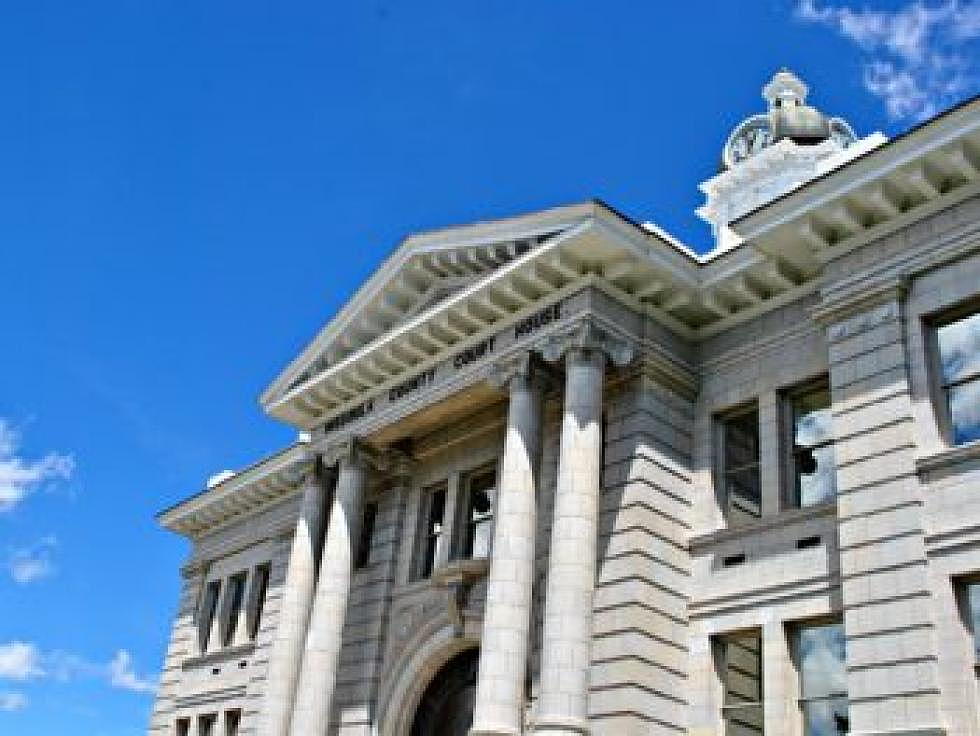
Sustainable Missoula: County Courthouse LEEDs the way with energy savings
With Earth Day coming up, it’s important to remember the three Rs: reduce, reuse, recycle.
If we want a cleaner and more livable planet, we need to conserve resources and live more sustainably. Here in Missoula County we’re doing just that, as demonstrated by the recently renovated Missoula County Courthouse.
Constructed in 1910 and designed by architect A.J. Gibson, the Missoula County Courthouse is listed on the National Register of Historic Places and serves as the figurative heart of Missoula. The historic building boasts eight murals of western Montana scenes by famed frontier painter Edgar S. Paxson. And now, after nine years of planning and renovations, the historic courthouse has achieved LEED Silver certification.
LEED, which stands for Leadership in Energy and Environmental Design, is a globally recognized rating system developed by the U.S. Green Building Council. LEED awards point to buildings in the categories of location and transportation, sustainable sites, water efficiency, energy and atmosphere, materials and resources, indoor environmental quality, and innovation. The point-based rating system determines a building’s certification level: Certified, Silver, Gold, or Platinum.
Missoula County’s Green Building Policy, adopted in 2010, guided the incorporation of LEED standards into the courthouse renovation.
“Pursuing LEED certification during renovation was part of the County’s efforts to conserve energy and reduce greenhouse gas emissions while also creating local jobs and improving employee health, productivity and quality of workspace,” Commissioner Jean Curtiss says. Seeking LEED certification was a significant task, but the diligence, efficiency, creativity and attention to detail of county staff, Jackson Contractor Group, and A&E Architects and their design team paid off.
“Working in a fully occupied building with 24/7 operations that’s continually open to the public and on the historic register presented challenges to the renovation,” says project architect Paul Filicetti. “Achieving LEED Silver is a tremendous accomplishment under complex circumstances, and we’re proud to have been a part of it.”
While many people think “green” buildings are expensive to build, a study of hundreds of buildings found no significant difference between the average cost of a LEED-certified building and other new construction in the same category.
“There is a difference, though, when considering the ongoing cost of operating the building,” says Commissioner Nicole “Cola” Rowley. “Since LEED buildings are designed to conserve energy and water, they tend to be significantly cheaper in the long run.”
At the courthouse, energy-efficient features such as an improved thermal envelope, high-efficiency window glazing, reduced interior lighting power density, occupancy sensors and high-efficiency water source heat pumps are anticipated to save 27 percent in energy costs annually. Water-efficient fixtures in all bathrooms and kitchen areas will reduce annual water volume by over 117,000 gallons, a reduction of more than 32 percent.
Additionally, the county used as many local materials in the courthouse renovation as possible. Approximately 10 percent of the total project material cost, or roughly $200,000, came from regional materials. Using regional materials supports local economies and jobs while also reducing emissions and pollution due to shorter transportation distances.
Waste reduction was another major focus of the renovation. The project reused, recycled, and repurposed existing materials in the courthouse, diverting 510 tons of waste from the landfill. The courthouse received maximum LEED points for Building Reuse by maintaining more than 98 percent of the existing building structure throughout the renovation. In addition, about 25 percent of the procurement budget went toward the use of recycled materials.
As a LEED-certified historic building, the Missoula County Courthouse uniquely demonstrates how we can preserve our community’s history while safeguarding the future. The renovation is, as Commissioner David Strohmaier says, “a gift to future generations — honoring our heritage and doing our part to address climate change.”
Eliot Thompson is an Energy Corps/AmeriCorps service member working as sustainability educator with Missoula County. This column is part of a 2018 weekly Missoula Current series, Sustainable Missoula, which highlights community sustainability efforts.
Upcoming Sustainability Events:
April 14: Run for the Treesand support Missoula’s urban forest – 5K and 10K races
April 14-22: International Wildlife Film Festival
April 21: Clark Fork Coalition’s Annual River Cleanup
April 22: MUD’s 12thAnnual Earth Day Celebration
